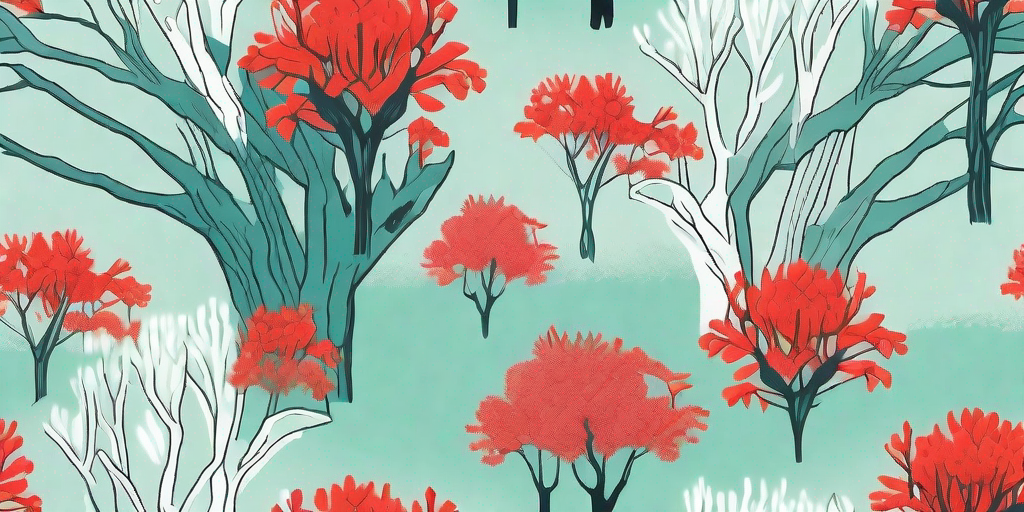
Ever wondered what a coral reef and a tree might have in common? No, it's not a trick question. The answer lies in the enchanting world of the Coral Tree. This unique species of flora not only shares its name with the underwater ecosystem but also boasts a beauty that can rival its marine namesake. So, buckle up, plant enthusiasts, as we embark on a journey to explore the charm and benefits of the Coral Tree.
The Coral Tree: A Brief Introduction
First things first, let's get acquainted with our subject of interest. The Coral Tree, scientifically known as Erythrina, is a genus of flowering plants in the pea family, Fabaceae. With over 130 species spread across the tropical and subtropical regions, these trees are as diverse as they are beautiful.
What sets them apart is their vibrant, coral-like flowers that bloom in a variety of shapes and sizes. From the fiery red of Erythrina lysistemon to the delicate pink of Erythrina crista-galli, the Coral Tree is a feast for the eyes. But it's not just about looks; these trees are also known for their resilience and adaptability, making them a popular choice for landscaping and gardening.
Why Should You Consider Planting a Coral Tree?
The Aesthetic Appeal
Let's be honest, who wouldn't want a mini coral reef blooming in their backyard? The Coral Tree's vibrant flowers and unique shape make it a standout feature in any garden. Whether you're aiming for a tropical paradise or a desert oasis, this tree can add a splash of color and a touch of exoticism.
And it's not just about the flowers. The Coral Tree's bark, with its rugged texture and rich brown color, adds an element of rustic charm. Plus, the tree's unique branching pattern, reminiscent of underwater coral formations, provides an interesting visual element, even when the tree is not in bloom.
The Environmental Benefits
But the Coral Tree is not just a pretty face. It's also an environmental powerhouse. These trees are known for their nitrogen-fixing abilities, meaning they can improve soil fertility and promote plant growth. So, while you're enjoying the beauty of your Coral Tree, you're also giving a boost to the rest of your garden.
Moreover, the Coral Tree's flowers are a favorite among pollinators like bees and butterflies. By planting one in your garden, you're creating a mini sanctuary for these crucial creatures and contributing to biodiversity. Now, that's what we call a win-win situation!
How to Plant and Care for Your Coral Tree
Now that you're sold on the idea of having a Coral Tree in your garden, let's get down to the nitty-gritty of planting and caring for one. Don't worry, we promise it's not as daunting as it sounds!
Planting Your Coral Tree
- Choose the right location: Coral Trees love the sun, so pick a spot that gets plenty of it. They also need well-drained soil to prevent root rot.
- Prepare the soil: Add compost or organic matter to enrich the soil. Remember, a happy tree starts with healthy soil!
- Plant the tree: Dig a hole twice as wide and just as deep as the root ball. Place the tree in the hole, making sure the top of the root ball is level with the soil surface. Backfill the hole and water thoroughly.
Caring for Your Coral Tree
- Watering: Coral Trees are drought-tolerant, but they do appreciate a good drink during dry spells. Just make sure not to overwater, as this can lead to root rot.
- Pruning: These trees can get quite large, so regular pruning is necessary to maintain their shape and size. Plus, pruning encourages more blooms. Who doesn't want more flowers, right?
- Fertilizing: While Coral Trees are not heavy feeders, they do benefit from a slow-release fertilizer applied in the spring and fall.
Frequently Asked Questions
Are Coral Trees fast-growing?
Yes, Coral Trees are known for their rapid growth rate. With proper care, you can expect your tree to reach its mature size in just a few years.
Are Coral Trees evergreen?
It depends on the species. Some Coral Trees are deciduous, shedding their leaves in the winter, while others are semi-evergreen, retaining some foliage year-round.
Are Coral Trees safe for pets?
While the Coral Tree's flowers and nectar are safe, its seeds and leaves can be toxic if ingested in large quantities. Therefore, it's best to keep curious pets away from these trees.
Conclusion
There you have it, folks! The Coral Tree, with its stunning flowers and environmental benefits, truly is a gem of the plant world. Whether you're a seasoned gardener or a budding plant enthusiast, this tree is sure to bring joy and beauty to your green space.
So, why not take a leaf out of the Coral Tree's book and branch out? After all, life's too short for boring gardens!















